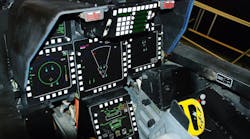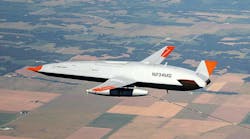By Ben Ames
PALO ALTO, Calif. - Current military operations in Afghanistan and Iraq and the transformation of the force structure to adopt network-centric warfare (NCW) is driving U.S. military forces to spend billions of dollars on digital tactical military communications, according to new findings from market researcher Frost & Sullivan in Palo Alto, Calif.
Driving spending are immediate operational needs for ground forces fighting in Afghanistan and Iraq, based on congressional and Pentagon policies.
Specific naval and air tactical communications will have secondary emphasis for the next few years, but platforms and technologies, such as satellite communications, that have direct operational influence on small units on the ground are also a priority, Frost & Sullivan analysts say.
The new analysis from Frost & Sullivan’s Aerospace and Defense Group-“U.S. Tactical Military Communications Markets”-shows that U.S. Department of Defense spending for tactical communications was $4.78 billion in 2004 and is estimated to reach $5.68 billion by 2010.
“A large percentage of DOD tactical communications funding is allocated for systems integration work to ‘bridge’ existing radios and to incorporate new technologies as they come on line,” says Frost & Sullivan industry analyst Brad Curran.
The military services require improved connectivity to increase situational awareness, allow for better command decisions, faster targeting, and increased efficiency, analysts say.
The tactical military communications industry is developing new technologies and sophisticated networked systems that enable soldiers and commanders to see the big operational picture and tighten the “sensor-to-shooter” kill chain, Curran says.
However, some transformational communications technologies are immature and the acquisition cycles are still too long and inefficient. Software-defined radio (SDR), multilayered access, security, and long-lasting lightweight power supplies are some of the technologies that have not progressed as quickly as planned.
The U.S. armed forces are also experiencing difficulties with tactical radio systems. Systems are dying due to end-of-service life and intense operational use that speeds normal attrition. The Joint Tactical Radio System is not yet available, and program schedules and funding have been delayed, Frost & Sullivan points out.
The resulting gap between current equipment and the budgetary and technological timeline for the next generation of SDR presents an opportunity for companies to provide interim tactical radio and network solutions.
Firms with innovative communications technologies that can demonstrate solutions to operational problems of warfighters will have success, says Frost & Sullivan. Commercial off-the-shelf (COTS) solutions are often sought, because they save money and generally have open architectures that make integration with current and future systems easier.
“The communications technology and capabilities that are needed by the DOD are shared with industry, and they invite innovative firms to show how their product can meet specific concept of operation requirements,” Curran says.
For more information on the study, visit www.frost.com.


